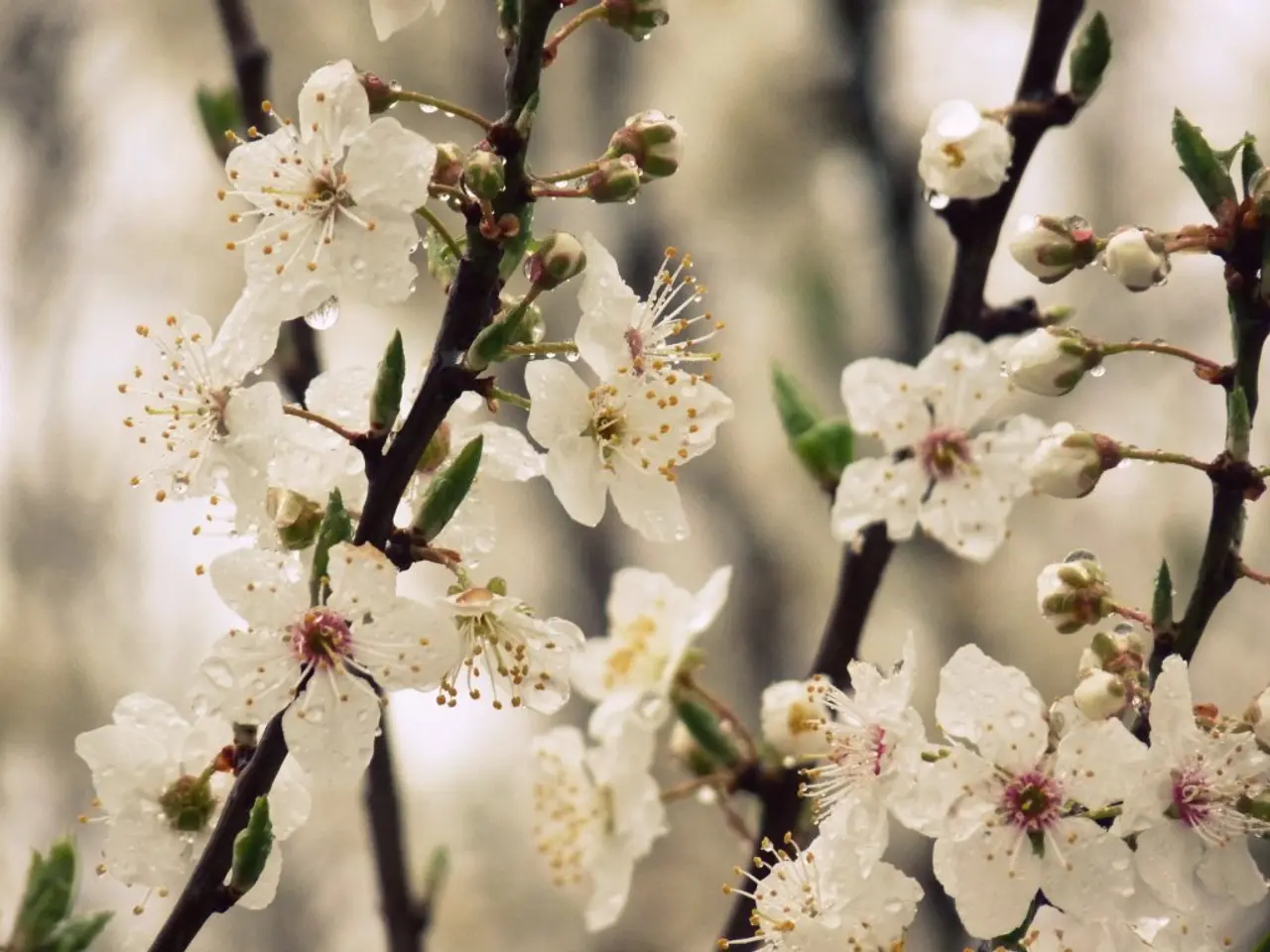Mastering Hyacinth Cultivation and Maintenance: A Comprehensive Handbook
Hyacinths, with their vibrant and fragrant blooms, are among the simplest spring bulbs to cultivate and have been a popular choice for gardeners since they were first introduced to Europe in the 16th century. Today, roughly 60 cultivars of hyacinths are available for commercial cultivation, thanks in part to Dutch bulb farmers who developed over 2,000 cultivars by the 18th century.
These versatile bulbs can be planted in the ground, in pots, or even grown in water in a bulb vase with no soil. For the best results, plant them in the fall, around September to October, and ensure they get at least six hours of sunlight per day, although they will bloom in partial shade as well.
When it comes to choosing companions for hyacinths, there are several options that complement them well. Grape hyacinths (muscari) are excellent companions, with their pleasant blue or purple blooms that contrast nicely with hyacinths' colours. They share similar cultural needs, requiring well-drained soil and full sun to partial shade.
Other good companions to consider include tulips, bluebells, iris, crocus, alliums, Virginia bluebells, forget-me-not, pasque flower, hellebore, and rhododendron. These plants offer a range of contrasting colours and overlapping or sequential blooming periods in spring, creating a beautiful and fragrant display.
If you want to attract pollinators and extend the blooming period, consider adding tulips and crocus for early spring colour, and alliums for early summer interest. Plants like forget-me-nots and hellebore offer nice foliage and bloom timing that pairs well with hyacinths.
Some companion plants serve a functional purpose alongside hyacinths. For example, daffodils planted with grape hyacinths and alliums can help repel pests like rats, contributing to garden health when grown together.
In summary, the best companions for hyacinths combine complementary bloom times, colours, and garden benefits. By choosing from the recommended list of tulips, grape hyacinths (muscari), bluebells, iris, crocus, alliums, Virginia bluebells, forget-me-not, pasque flower, hellebore, and rhododendron, you can create beautiful, fragrant, and pest-resistant spring displays when planted with hyacinths.
Remember to plant the bulbs three to four times deeper than their height, with the pointy side facing up, and enjoy the beauty of your spring garden!
[1] Gardening Know How. (2021). Best Companion Plants for Hyacinths. [online] Available at: https://www.gardeningknowhow.com/ornamental/bulbs/hyacinth/companion-plants-for-hyacinths.htm [2] The Spruce. (2021). Hyacinth Companion Plants. [online] Available at: https://www.thespruce.com/hyacinth-companion-plants-1402781 [3] HGTV. (2021). Hyacinth Companion Plants. [online] Available at: https://www.hgtv.com/design/landscaping/plants/hyacinth-companion-plants [4] Gardener's Path. (2021). Hyacinth Companion Plants. [online] Available at: https://www.gardenerspath.com/plants/bulbs/hyacinth-companion-plants/
- The versatility of hyacinths allows them to be planted in various environments, such as gardens, pots, or even in water, adapting to both outdoor and indoor lifestyles.
- In a home-and-garden setting, it's crucial to provide them with organic fertilizer and proper care to ensure a vibrant and fragrant indoor display.
- While hyacinths bloom beautifully on their own, planting them with other bulbs can create a stunning outdoor garden.
- Companion plants like tulips, grape hyacinths (muscari), bluebells, and iris not only offer a range of colors, but also have overlapping blooming periods, resulting in a breathtaking spring display.
- Some companion plants like daffodils serve a functional purpose, helping repel pests and contributing to garden health.
- To extend the blooming period and attract pollinators, consider adding early-blooming tulips and crocus for spring color, and alliums for early summer interest.




